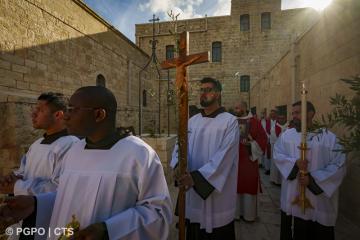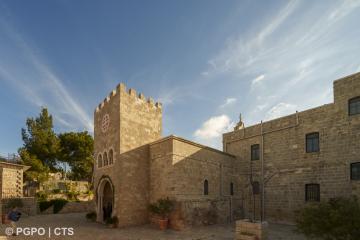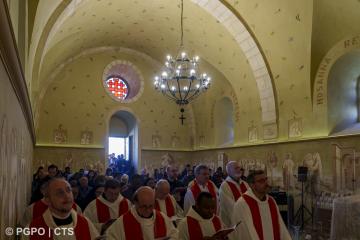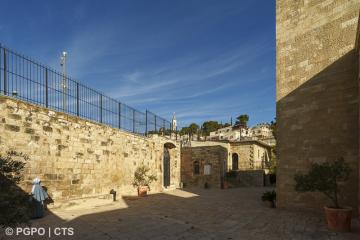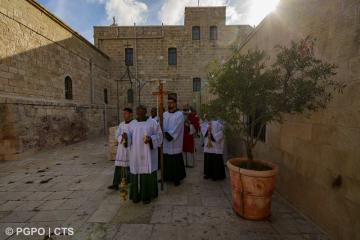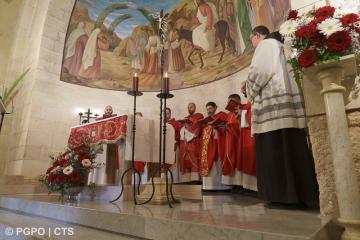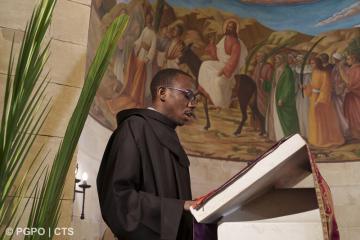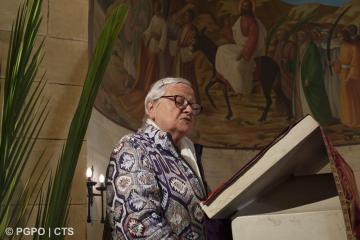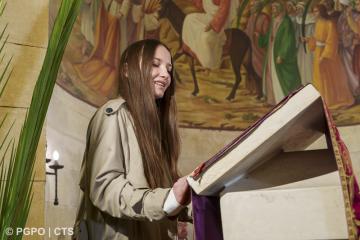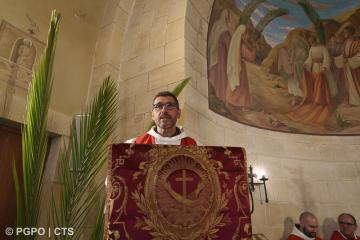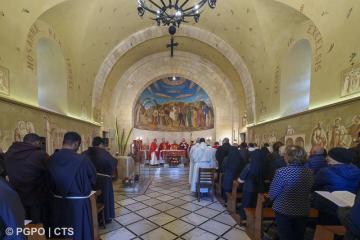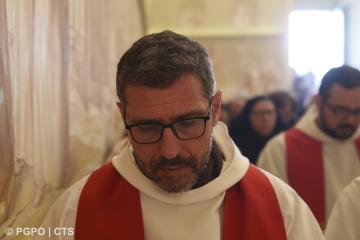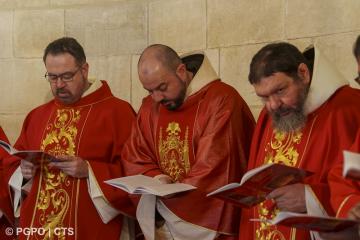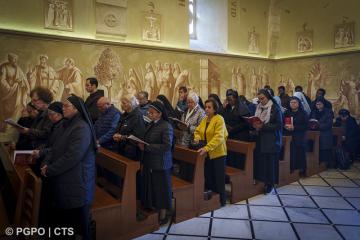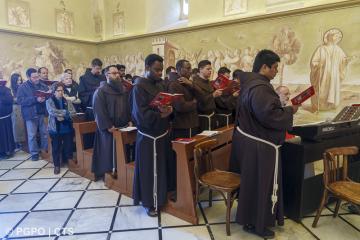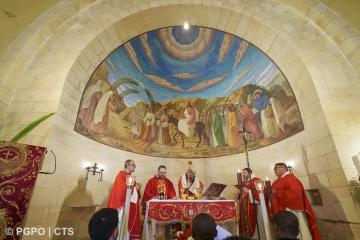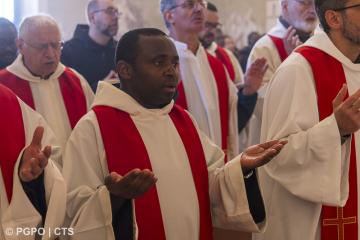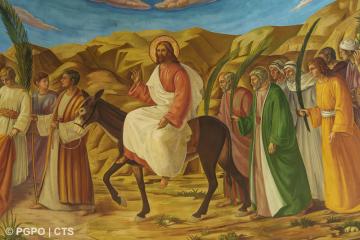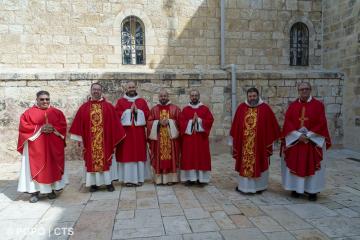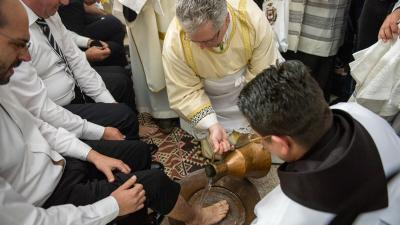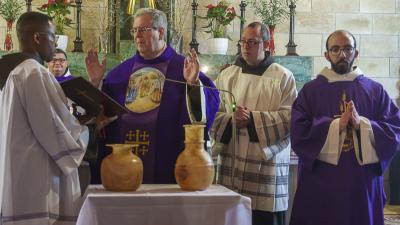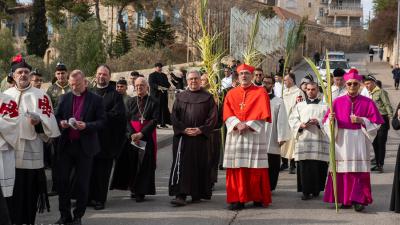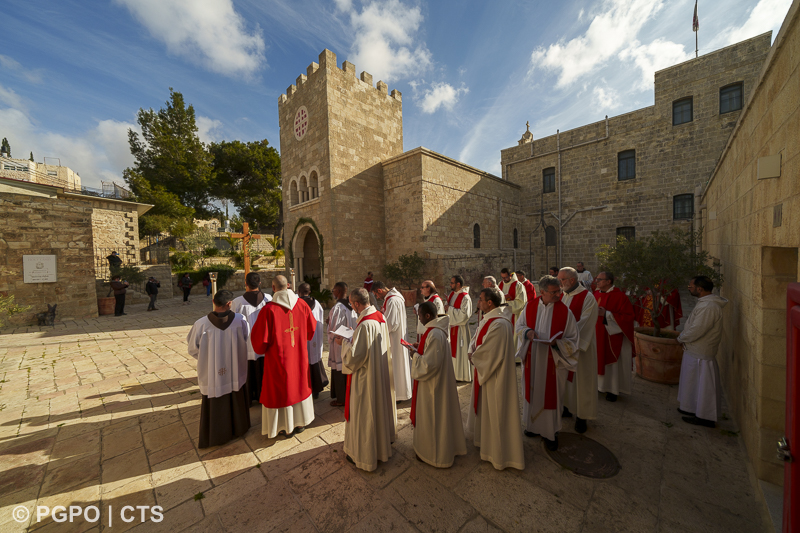
The Lenten peregrinations by the Franciscan friars of the Custody of the Holy Land came to an end with the singing of the “Hosanna” in Bethphage, on Saturday 23 March. It is the day before Palm Sunday, the day when, from Bethphage, the procession that commemorates the entrance of Jesus into Jerusalem starts. While Mass was being celebrated in the Franciscan shrine, outside the Indian Catholic community celebrated its Palm Sunday one day early (since almost all the Indians work for Jewish employers, Sunday is a working day for them).
Bethphage, a meeting place
The shrine of Bethphage, restored in its present form in 1954, stands on the eastern slope of the Mount of Olives. It is at the crossroads of three roads: for Jerusalem, for Jericho and for Bethany. Here the meeting between Jesus and Martha and Maria is remembered: they had gone to meet him when he was on the way to Bethany – less than a kilometre away - where he will resuscitate Lazarus. From as early as the 4th century, the pilgrim Egeria speaks of a church that preserves the memory of this meeting. The point from where Jesus left to enter Jerusalem, acclaimed by the crowd, is also situated here.
The stone of memory
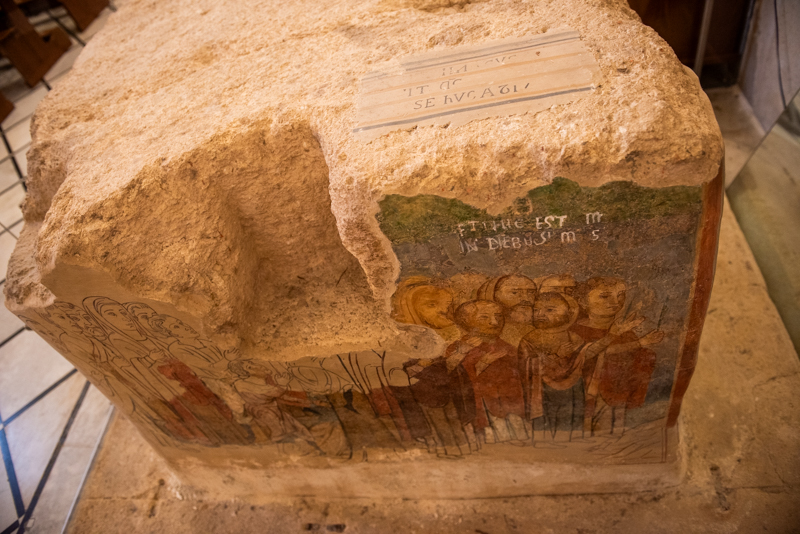
The memory of the place had been lost until, in 1870, a stone in the shape of a cube - now incorporated in the present-day church –, in which some paintings recall the aforementioned events was found: Martha, Mary and Lazarus resuscitated, a crowd holding palm branches and an ass and her foal freed from their ties before the eyes of the inhabitants of the village. In 1871, the Franciscans bought this property and built the first shrine there, which was then enlarged in 1954 and restored in 2014.
The peregrination
The Franciscan friars entered the small church of Bethphage in a procession. After reciting the lauds, Mass was celebrated, presided over by fra Alberto J. Pari, Secretary of the Custody of the Holy Land. The homily was given by fra Paolo Messina, a lecturer at the Studium Biblicum Franciscanum in Jerusalem, chosen to guide the Lenten reflections of the Franciscans.
Invitation to joy
“Jesus arrives in Jerusalem, the crowd glorifies him but a few days later he will be crucified. What is the point of experiencing the joy and exaltation of that day? Perhaps Jesus was not aware of what he going towards? Fra Paolo said provocatively in his homily . In actual fact, Jesus knew very well where that road ended, and he decided to travel down it in joy: “The joy of that day is not oblivion of the future sufferings or previous difficulties. It is, on the other hand, an invitation to live with joy even those situations which speak to us of death. There is a profound joy that comes from the certainty that the Lord is going down that road towards Jerusalem with us.”
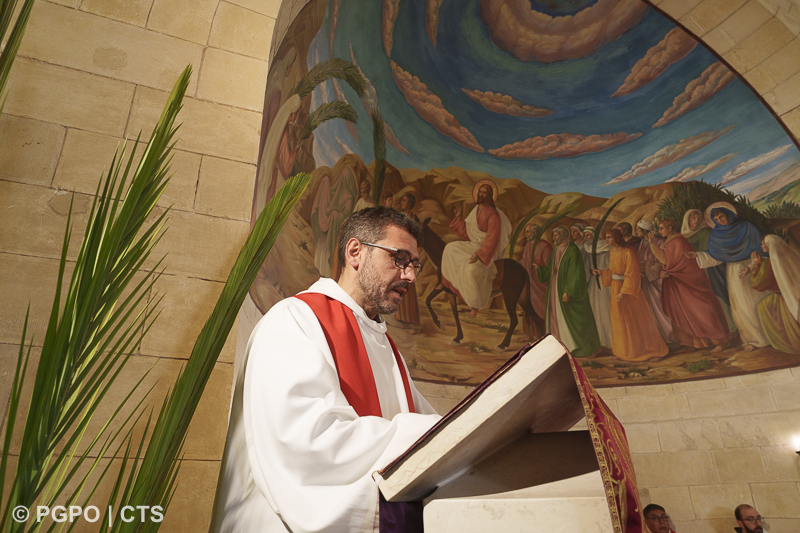
From silence, a song of praise
On his way, the preacher invited us to “undo the knots that oppress our lives, just as Jesus “undid” the donkey he entered the city on. “From this land in particular, I think that we are called to undo, i.e. to defeat resentment to free peace, the desire for subjugation to recognize our brother in the other, the hatred to forgive that brother.” Lastly, an exhortation, which also has the flavour of Easter: “Let us undo the silence that has accompanied us in this time of Lent into a song of praise, into a hymn of exultance because the Lord has risen and is coming again to free us.”
Marinella Bandini


